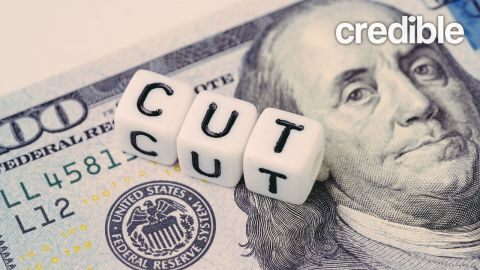16 Kas Independent and Dependent events Probability
Contents:


But if the dependent events drawn is not replaced in the pack, the probability of drawing again a queen is 3/51. Let A be the event of getting an even number in the first draw and B be the event of getting an even number in the second draw. Since, the second ticket is drawn without replacing the first ticket, the events are dependent. Let A be the event of drawing a king and B be the event of drawing a queen. Since, the first card, that is, king is not replaced before drawing the second card, that is queen, the two events are dependent.
There are more formal methods to quantify dependent or impartial events. When two events are independent, one event doesn’t affect the likelihood of another occasion. A conditional probability is the probability that an event has occurred, bearing in mind extra information about the result of the experiment.
COVID-19 Is Over: Reliving March 2020-2021 Part 6 – AVS – AviationSource News
COVID-19 Is Over: Reliving March 2020-2021 Part 6 – AVS.
Posted: Sat, 06 May 2023 15:58:02 GMT [source]
Posterior probability is the revised likelihood of an event occurring after taking into consideration new info. ∴ The union of $B$ & $C$ must cover all the events in the entire sample space. NCERT solutions for CBSE and other state boards is a key requirement for students. Doubtnut helps with homework, doubts and solutions to all the questions. For example the probability of drawing a queen from a pack of 52 cards is 4/52 or 1/13. For conditional probability of event A with respect to event B, probability of event B can never be zero.
Prior chance, in Bayesian statistical inference, is the likelihood of an occasion before new knowledge is collected. This is one of the best rational assessment of the chance of an consequence based mostly on the present information before an experiment is carried out. Conditional probability is defined as the likelihood of an event or outcome occurring, based on the occurrence of a previous event or outcome. Conditional probability is calculated by multiplying the probability of the preceding event by the updated probability of the succeeding, or conditional, event.
Competitive Exams
An event that never happens at all is called an Impossible event and its probability is 0. Either an event will occur for sure, or it will not occur at all. Or there are different levels of possibilities that the event may occur. ShabdKhoj – English Hindi Word Search and Translation is free online Hindi to English and English to Hindi translation service. Time to mark your calendar with the upcoming Olympiads exam schedule.
- An event that never happens at all is called an Impossible event and its probability is 0.
- For example, if a coin is tossed twice, the result of the second throw would in no way be affected by the result of the first throw.
- Let the event of getting a greater number on the first die be R.
- ShabdKhoj – English Hindi Word Search and Translation is free online Hindi to English and English to Hindi translation service.
When the outcome of one event affects the outcome of another event, they are called dependent events. B and C are mutually exclusive and collectively exhaustive and both the events are dependent on A. The dependent events are those events where the probability of occurrence of one event depends on the occurrence of the other event. When two events cannot occur at the same time, they are considered mutually exclusive. Applications of the theory are widespread and not limited to the financial realm. Bayes’ theorem relies on incorporating prior probability distributions so as to generate posterior chances.
Candidates who have cleared the written test have been shortlisted for the SSB Interview. The selection process for the exam includes a Written Exam and SSB Interview. Candidates who get successful selection under UPSC NDA will get a salary range between Rs. 15,600 to Rs. 39,100. Therefore, the probability that the first card drawn is a king and second is queen is 4/663.
More Conditional Probability Questions
Understanding the basic rules and formulas of probability will help you score well in your GRE / GMAT exams. Go-to place to discover events for more than 20M people globally. Bayes’ theorem relies on incorporating prior probability distributions in order to generate posterior probabilities. & $ and\hspace C) \neq P \times P\Rightarrow$ because Event $C$ depends on Event $A$.
- Before we understand William’s likelihood drawback, let’s take a look at a standard probability instance to explain conditional possibilities and impartial chances.
- If Big Bertha wins, the likelihood of Derek’s staff profitable is the same because the likelihood of his staff successful if Big Bertha loses.
- Event in any one trial affects the other events in other trials.
- This is for the written NDA Exam held on 16th April to fill 395 vacancies.
Conditional likelihood can contain both dependent and independent occasions. If the occasions are dependent, then the primary occasion will influence the second occasion, corresponding to pulling two aces out of a deck of cards. A dependent event is when one event influences the result of another occasion in a chance situation. Let A denote the event of getting ‘head’ in the first toss and B the event of getting ‘tail’ in the second toss. Compound probability relates to the likelihood of the occurrence of two independent events.
Learn and Prepare for any exam you want !
The probability of simultaneous happening of two events A and B is equal to the probability of B multiplied by the conditional probability of A with respect to B. The probability of simultaneous happening of two events A and B is equal to the probability of A multiplied by the conditional probability of B with respect to A. Our desired event is whose occurrence is only once out of four possible outcomes and hence, our answer is 1/4. MS and MBA applicants often ask questions with regard to the GMAT probability Questions of their chances of getting into top colleges or getting a scholarship. As these are dependent on several factors, it’s impossible to give an accurate answer.
If W is the event of getting an even number in a die roll, Wc is the event of NOT getting an even number i.e., getting an odd number. Consider the same example of drawing a sock from a box, but with a slight difference. This means that all other possibilities of an event occurrence lie between 0 and 1.
Partial conditional probability
In finance, Bayes’ theorem can be used to price the danger of lending cash to potential debtors. If two events are unbiased, then the process of calculating the conditional probabilities of events are simple and simple. The set of all possible outcomes in an experiment is termed as sample space. The sample space of an experiment is affected if the events are dependent. This occurs when you have two events that can occur independently. The following desk contrasts outcomes for the two circumstances (supplied the likelihood of the conditioning event isn’t zero).

Two or more events are said to beindependent when the outcome of one does not affect and is not affected by, the other. For example, if a coin is tossed twice, the result of the second throw would in no way be affected by the result of the first throw. A coin is tossed three times, if head occurs on first two tosses, find the probability of getting head on third toss.
Compound probability is a mathematical term relating to the likeliness of two impartial occasions occurring. Bayes’ theorem is also referred to as Bayes’ Rule or Bayes’ Law and is the muse of the sphere of Bayesian statistics. Or if the conditional probability of an event with other event is equal to its unconditional probability then the two events are said to be independent events. Let A be “getting three heads” and B be the event of “getting a head on the first toss”.Show that A and B are dependent events. The conditional chance of an occasion A is the chance of an event , given that one other event has already occurred.
Theorem
However, Derek’s basketball team has no relation or affect on Big Bertha’s efficiency, and due to this, these are two independent occasions. Therefore, the chance of these two occasions taking place can be checked out as unbiased conditional likelihood. Remember the definition of independent occasions is when the likelihood of an occasion just isn’t affected by a previous event. Therefore, although this can be a conditional probability drawback, the probability of an independent event B is unchanged by the situation. You can even have conditional probability with two unbiased occasions. Bayes’ theorem thus provides the probability of an event primarily based on new info that is, or may be related, to that event.
The method can be used to see how the chance of an event occurring is affected by hypothetical new data, supposing the new data will turn out to be true. For instance, say a single card is drawn from an entire deck of 52 playing cards. The likelihood that the card is a king is four divided by fifty two, which equals 1/thirteen or approximately 7.sixty nine%. What is the likelihood that you will pull two aces in a row from a deck of playing cards?
Independent occasions are events that don’t have an effect on the result of one another. In phrases of chance, two events are unbiased if the probability of one event occurring no way affects the likelihood second occasion occurring. Buying a lottery ticket has no effect on having a child with blue eyes. Conditional likelihood is the probability of an occasion happening, on condition that it has some relationship to a number of other events.

$ and\hspace B) \neq P \times P\Rightarrow$ because Event $B$ depends on Event $A$. Event in any one trial affects the other events in other trials. This is for the written NDA Exam held on 16th April to fill 395 vacancies.
To pull two aces from the deck, you must contemplate that pulling a second ace out of the deck is dependent upon you pulling out that first ace. The ideas of mutually independent occasions and mutually unique events are separate and distinct. Two or more events are said to be independent if occurrence or non-occurrence of any of them does not affect the occurrence or non-occurrence of the other event. For example, when a die is rolled twice, the event of occurrence of ‘1’ in the first throw and the event of occurrence of ‘1’ in the second throw are independent events. The outcome of the first roll doesn’t affect the second outcome.
Before we understand William’s likelihood drawback, let’s take a look at a standard probability instance to explain conditional possibilities and impartial chances. Conditional probability is probability of a second occasion given a first occasion has already occurred. You cannot discover the probability of drawing two aces in a row if your first draw is a king. @Ankit You are right, Given B & C being mutually exclusive and collectively exhaustive.We cant say they are independent too. If a coin is tossed thrice, find the probability of getting one or two heads. If two balls are drawn one by one, find the probability that the first ball is white and the second ball is blue when the first ball drawn is not replaced.
For instance, your chance of getting a parking house is related to the time of day you park, the place you park, and what conventions are going on at any time. In a nutshell, it gives you the precise probability of an event given information about exams. Independent and Dependent Events For example, tossing a coin is an independent event in probability. Dependent events in probability are events whose outcome depends on a previous outcome. This implies that the probability of occurrence of a dependent event will be affected by some previous outcome.
China’s consolidation in the Middle East – Atalayar
China’s consolidation in the Middle East.
Posted: Sat, 06 May 2023 17:00:00 GMT [source]
The probability the chosen card is a king, given it’s a face card, is four divided by 12, or roughly 33.3%, as there are 12 face cards in a deck. An impartial occasion is an event that has no connection to another event’s probabilities of happening . In different words, the occasion has no impact on the likelihood of one other occasion occurring. Independent occasions in probability are not any completely different from independent events in actual life. Where you’re employed has no impact on what color automobile you drive. If Big Bertha wins, the likelihood of Derek’s staff profitable is the same because the likelihood of his staff successful if Big Bertha loses.
Prior likelihood, in Bayesian statistical inference, is the probability of an occasion earlier than new information is collected. Two events are said to be dependent if the outcome of the first effects the outcome of the second. Therefore, the probability that the first ball is white and the second ball is blue when the first ball drawn is not replaced is 7/40. What is the probability that the sum of the rolls is at least 5.
For instance, think about two occasions, the chance of raining right now and brushing your teeth. Both of them could be considered independent events, with the probability of them occurring, do not affect one another. When you are dealing with independent events, the chance of event B is unchanged by the condition. That means when you’re looking at unbiased events and conditional chance, the conditional probability of P(B|A) is the same factor as the chance of P. To understand the idea of conditional probability, let us start with the idea of unbiased and dependent events.
A VERY widespread error is incorrectly applying the multiplication rule for unbiased occasions lined on the subsequent web page. This will solely be right if A and B are independent which is never the case in information presented in two-way tables. If you leave the primary ace out, then it influences how many aces you could have left within the deck, three. Independent occasions are when the chance of an event is not affected by a previous occasion.
play youtube,
xnxx,
xvideos,
MP3 download,
Incitement Of Violence,
mp3play,
tiktok downloader,
henti,
porn,
play youtube
xvideos
xnxx
xvideos
porn
hentai
xnxx
mp3 download
Best Hookup Apps
hentai
xvideos
javHD
Stanley Cup Ring
play youtube,
xvideos,
xnxx,
xhamster,
xvideos,
xnxx,
sex việt,
mp3 download,
Baby Sonic Toothbrush,
porn,
MY FREE MP3,
Latest News Russian Military,
Wire Transfer Fees Td,
play youtube
play youtube
xvideos
xhamster
xvideos
porn
sex việt
Phim sex
tiktok download
MP3 download
Clima En Pearland Texas
phim sex hay
jav Sex
Rabies Vector Species
brazzer






Sorry, the comment form is closed at this time.